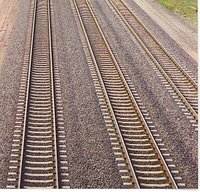Needed: A New Paradigm for Track Inspection
During my formative years with Railroad Track, the old heads gave me many tidbits of knowledge that each of them thought important enough for me to remember. Some of it was flat-out wrong, like the time I was told, "that fine chat makes way better ballast than that big granite rock." Some of it I did not want to hear, like the time I heard, "Diamonds are created by time and pressure." You might have guessed that someone told me that during the pressure cooker of a derailment clean-up.
But some of what I heard was profound. Sometimes, a simple statement illuminates, often in a very deep and widespread way, exactly why things are the way they are. Such a statement was, "Track Inspection is based on the exception. We look for those exceptions that make bad track out of good track."
The exceptions that we would find included such things as defective joints for whatever reason, defective ties, defective rails, degraded ballast, poorly fitting switch points, as well as line and surface defects that did not meet Company Standards. No doubt this idea of finding the exception is a good rule to follow. But maybe, we need to widen our beam of light to illuminate more possibilities.
I am thinking about the Powder River Basin in Wyoming, and how coal dust has created major track maintenance problems.
 Looking at the track to the right, from the Powder River Basin by the way, it is hard to imagine finding a defect, or an "exception that makes bad track out of good track." But indeed, there is something going on here that led to big maintenance problems.
Looking at the track to the right, from the Powder River Basin by the way, it is hard to imagine finding a defect, or an "exception that makes bad track out of good track." But indeed, there is something going on here that led to big maintenance problems.I have to admit that I do not have a quick answer to this problem. I also readily admit that I am not aware of much of any new thinking regarding more comprehensive track inspection methods. No matter, it is a problem worth discussing, the sooner the better.
Part of the reason for such discussion is that, when more and more light rail and commuter rail operations carry more and more passengers, there will be less and less tolerance for any accidents. Inconvenience, lost time, or the unthinkable injury or loss of life, will become major issues. The DOT has already started to look at specific ways to prevent human error. Looking at ways to anticipate and find defective track must be talked about and developed now. The passengers and other customers of today and tomorrow will not simply allow us to wait until "inspection by exception" finds the problem.

0 Comments:
Post a Comment
<< Home